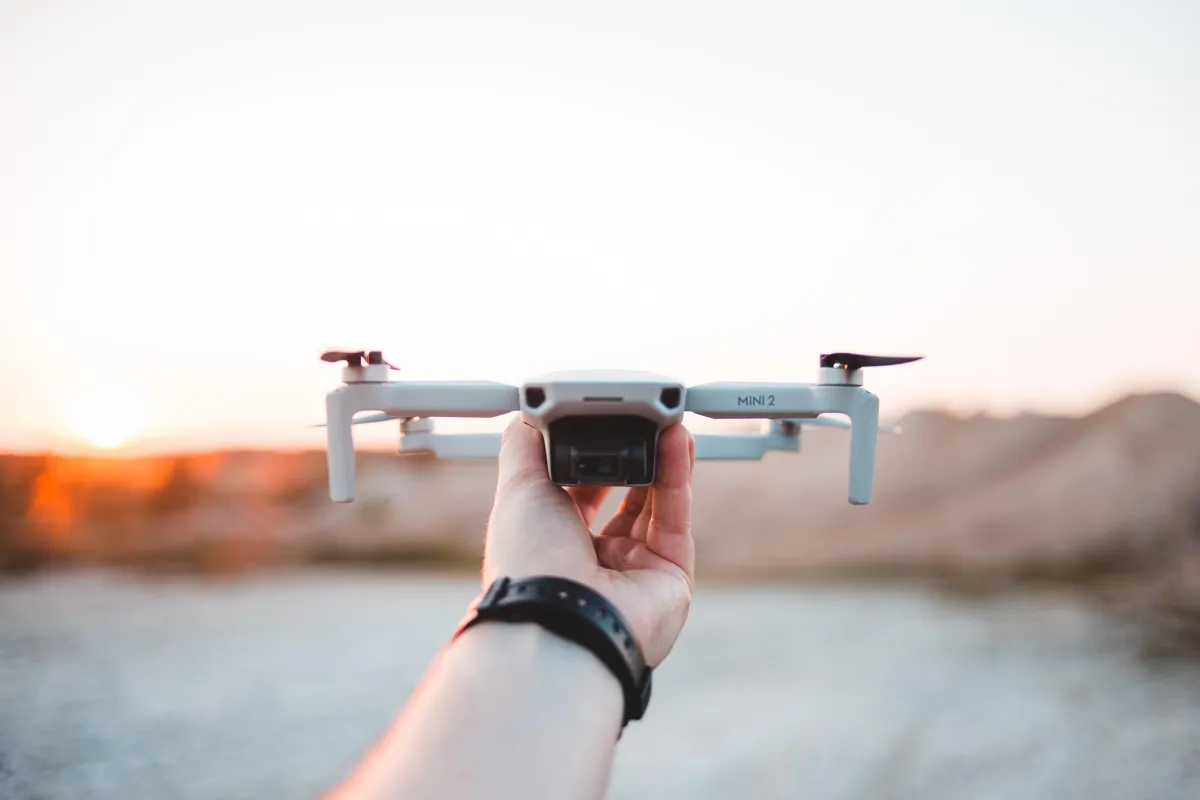
DJI Mini 2 vs. Mini 3: Sky Showdown
In the world of consumer drones, DJI has been a dominant force for quite some time. Their Mini series, known for its compact size and impressive features, has garnered a massive following among drone enthusiasts and professionals alike. If you're looking to dive into the world of aerial photography and videography, you've likely come across the DJI Mini 2 and Mini 3. But which option suits your needs best? In this article, I'll break down the differences between these two impressive drones, helping you make an informed decision.
DJI Mini 2 vs. Mini 3: Introduction
As someone deeply passionate about drones, I understand the excitement of exploring the skies and capturing breathtaking moments. DJI has been at the forefront of drone technology, consistently delivering high-quality products that cater to various needs and budgets. In this article, I'll walk you through the key aspects of the DJI Mini 2 and Mini 3 to help you make the best choice for your aerial adventures.
DJI Mini 2: The Trusted Companion
Compact Design and Portability
The DJI Mini 2, weighs just 242 grams and measures 138×81×58 mm (L×W×H) when folded without propellers. Its lightweight and compact design makes it incredibly portable, allowing you to take it anywhere your adventures lead.
Camera Capabilities
Equipped with a 1/2.3-inch CMOS sensor and an aperture of f/2.8, the Mini 2 boasts an effective pixel count of 12 MP. It's capable of recording ultra-clear 4K video at 30 fps, and 2.7K at 60 fps. The digital zoom capabilities include 2x for 4K, and 3x for 2.7K, allowing you to capture stunning details even from a distance.
Flight Performance
The Mini 2's flight performance is outstanding. With a maximum flight time of 31 minutes, it offers extended flight sessions. It can withstand wind speeds of up to level 5, providing stability and control in various weather conditions. The 3-axis motorized gimbal ensures your footage remains smooth and steady, even during challenging maneuvers.
Max Transmission Distance
The Mini 2 impresses with a max transmission distance of 6.2 miles or 10 km, allowing you to explore far-reaching landscapes and capture breathtaking shots with confidence.
Intelligent Flight Modes
The Mini 2 supports various QuickShots, including Dronie, Helix, Rocket, Circle, Boomerang, and Panorama (Wide angle, 180°, Sphere). The DJI Fly app enhances photo quality automatically, delivering vivid colors and details that pop. Whether you're a beginner or a seasoned pilot, these features enable you to capture professional-quality shots effortlessly.
Smart Return to Home, automatic takeoff, and precise hovering are some of the intelligent flight modes that make flying the Mini 2 a breeze. These features enhance safety and usability, making it an excellent choice for both beginners and experienced pilots.
DJI Mini 3: The Upgraded Experience
Compact Design and Portability
The DJI Mini 3 maintains the compact and portable nature of the Mini series, weighing under 249 grams and folding to 148×90×62 mm (L×W×H). This ensures that you can easily carry it with you wherever your adventures take you.
Camera Capabilities
The Mini 3 takes a significant leap in camera capabilities, featuring a 1/1.3-inch CMOS sensor with an aperture of f/1.7. This impressive camera captures stunning 48 MP photos, even in challenging lighting conditions. The Mini 3 supports 4K video at 30 fps, and 2.7K at 60 fps. It excels in 4K HDR video, delivering true-to-life colors both day and night. The addition of LightCut, a one-tap editing feature, simplifies post-processing and ensures your footage looks its best.
HDR Video
The Mini 3 is designed to capture video with breathtaking depth and detail, thanks to its HDR capabilities. HDR video is a technique used in photography and videography that combines multiple exposures of the same scene to create a final image or video with a wider dynamic range. In simple terms, it means that the drone can capture more details in both the brightest and darkest areas of a scene simultaneously.
Flight Performance
With a maximum flight time of 38 minutes (with Intelligent Flight Battery) or an impressive 51 minutes (with Intelligent Flight Battery Plus), the Mini 3 allows extended aerial exploration. The Mini 3's resistance to level 5 winds further enhances its suitability for flying in various weather conditions, giving you the freedom to explore without limitations.
Max Transmission Distance
Similar to the Mini 2, the Mini 3 offers a max transmission distance of 6.2 miles or 10 km, ensuring you stay connected even when flying at greater distances.
Intelligent Flight Modes
QuickShots like Dronie, Circle, Helix, Rocket, and Boomerang are available, along with panorama options for Wide Angle, 180°, and Sphere shots. LightCut, the one-tap editing feature, simplifies post-processing, allowing you to focus on capturing stunning footage effortlessly.
The Mini 3 shares these exceptional features with the Mini 2. Smart Return to Home ensures a safe return to the takeoff point, automatic takeoff simplifies launching, and precise hovering guarantees stable flight for both models. These user-friendly capabilities enhance the flying experience, whether you're a novice or a seasoned pilot.
DJI Mini 2 vs. Mini 3: Head-to-Head Comparison
Camera Quality
The Mini 3 truly stands out with its remarkable camera capabilities, including the ability to shoot in 4K HDR video. This feature ensures that your footage captures true-to-life colors, whether you're filming during the day or at night. HDR video takes your visuals to the next level by enhancing contrast, resulting in images that are exceptionally vibrant and lifelike.
This is particularly beneficial when you're in environments with varying light intensities, like shooting expansive landscapes with bright skies and shadowed foregrounds. The Mini 3's HDR functionality guarantees that your shots are exquisitely balanced and intricately detailed, making it the preferred choice for cinematographers and photographers who aspire to produce visually stunning content.
On the other hand, the Mini 2, while still offering a commendable 4K camera, caters more to hobbyists and amateur photographers. While its camera quality is undoubtedly good, it lacks the HDR capabilities that set the Mini 3 apart. Additionally, the Mini 2's higher aperture of f/2.8 means it may require more adjustments to capture the perfect shot in varying lighting conditions.
If you're looking for straightforward social media sharing, the Mini 3's lower aperture of f/1.7 allows more light to reach the sensor, ensuring true vertical shooting without the need for cropping your videos. In this aspect, the Mini 3 clearly emerges as the superior choice for those seeking top-notch camera capabilities.
Flight Time and Transmission
Both the Mini 2 and Mini 3 excel in providing excellent stability during flight. However, there are noteworthy distinctions in functionality between these two drones.
Remote Controller Options
With the Mini 2, you'll be using the DJI RC-N1 controller, which pairs with your smartphone for control and monitoring. On the other hand, the Mini 3 offers an upgrade option with the DJI RC (remote controller with a screen). This choice provides you with added convenience, as you can operate your drone without relying on a separate smartphone. This feature can be particularly valuable for those who prefer an all-in-one solution and a dedicated screen for their aerial adventures.
Flight Time
When it comes to airtime, the Mini 3 offers an advantage. It boasts a maximum flight time of 38 minutes, providing you with extended flight sessions to capture breathtaking footage. If you're looking to maximize your flight time even further, you have the option to upgrade to 51 minutes with the Intelligent Flight Battery Plus. However, it's important to note that this upgrade will push the Mini 3's weight above the 249-gram threshold, which could have regulatory implications.
Active Track and Obstacle Avoidance
It's worth mentioning that both of these drones do not offer Active Track and obstacle avoidance features. While they do feature downward sensing capabilities, which contribute to stable and safe flight, advanced tracking and obstacle avoidance functionalities are not included in these models.
Additional Features
Consider your specific needs, such as budget and long-term goals, when choosing between these drones. While the Mini 2 is an excellent all-rounder, the Mini 3 offers advanced features for those who demand the best in photography and videography.
No matter which drone you opt for, we highly recommend considering the Fly More Combo upgrade. This package equips you with two extra batteries and essential accessories, extending your flight time and enabling you to capture even more breathtaking shots.
DJI Mini 2 vs. Mini 3: Choosing the Right Drone for You
Hobbyist vs. Professional Use
The Mini 2 is a budget-friendly option suitable for hobbyists, casual photographers, and drone enthusiasts looking for reliable performance. On the other hand, the Mini 3 is tailored for professionals and photography enthusiasts who require exceptional camera capabilities and extended flight times.
Budget Constraints
Your budget plays a significant role in your decision. The Mini 2 offers excellent value for its price, making it an attractive choice for those looking to enter the world of drone photography. The Mini 3, while pricier, offers top-tier features that justify its cost for professionals and photography enthusiasts.
Future-Proofing Your Investment
Consider your long-term goals. If you plan to use your drone professionally or foresee the need for advanced camera capabilities, the Mini 3's features may make it a more future-proof investment. However, if you're just starting or have budget constraints, the Mini 2 is an excellent choice to begin your drone journey.
DJI Mini 2 vs. Mini 3: Frequently Asked Questions
FAQ 1: Can I use the DJI Mini 3's remote with the Mini 2?
The DJI RC-N1 is compatible with both models, but it's crucial to highlight that the DJI RC is exclusively compatible with the Mini 3 and subsequent models.
FAQ 2: Are the Mini 2 and Mini 3 both suitable for beginners?
Both drones are beginner-friendly, but the Mini 2 is more budget-friendly for those just starting.
FAQ 3: Is the Mini 3 worth the extra cost for photography enthusiasts?
For enthusiasts who demand top-notch camera quality, the Mini 3 is a worthwhile investment.
FAQ 4: How do the battery lives of these drones compare?
The Mini 3 has a longer battery life, offering up to 38 minutes of flight time, while the Mini 2 provides up to 31 minutes.
FAQ 5: Can I upgrade my Mini 2 to Mini 3 specifications?
No, you cannot upgrade a Mini 2 to match the Mini 3's hardware.
In conclusion, choosing between the DJI Mini 2 and Mini 3 ultimately depends on your specific needs, budget, and long-term goals. Both drones offer impressive capabilities, and you can't go wrong with either choice. Happy flying!

Copyright © Drone Guide Central - All Rights Reserved 2024

